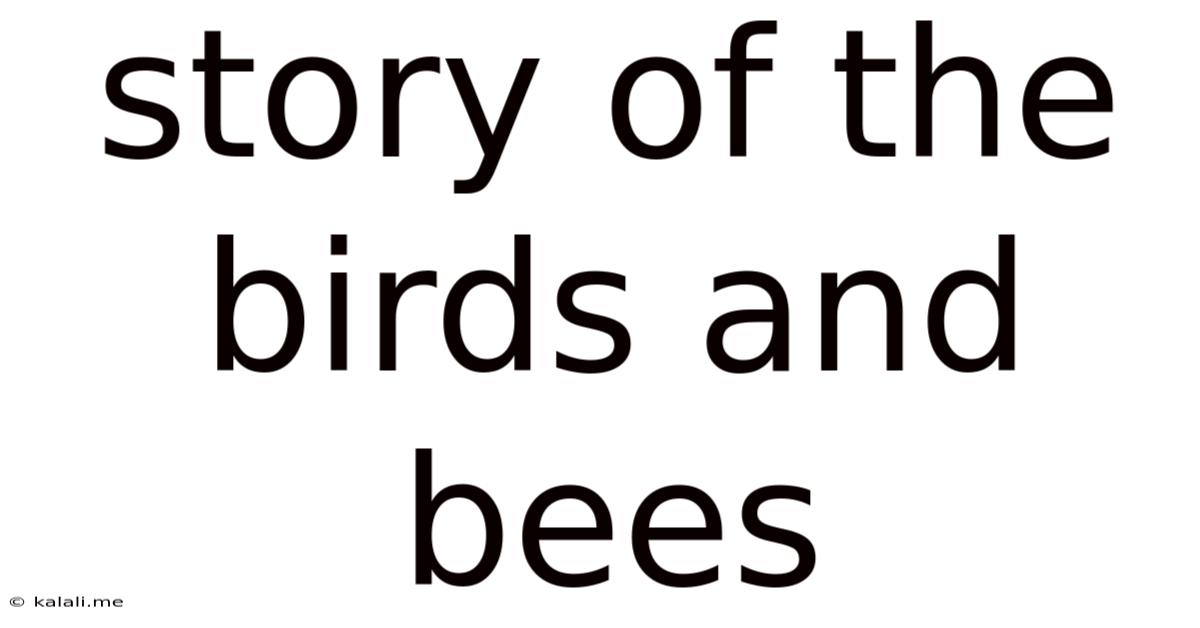Story Of The Birds And Bees
Kalali
Jun 10, 2025 · 3 min read

Table of Contents
The Story of the Birds and the Bees: A Comprehensive Guide for Parents
The "birds and the bees" – a euphemism that has spanned generations, yet its meaning remains a cornerstone of childhood development and parental guidance. This comprehensive guide aims to help parents navigate this delicate conversation, offering age-appropriate explanations and strategies for fostering open communication about sex education. Understanding the nuances of reproduction and human relationships is crucial for children's healthy growth and well-being.
Understanding the "Why" Behind the Conversation
Before diving into how to talk about sex, it's essential to understand why it's necessary. Open communication about reproduction and sexuality helps children:
- Develop a healthy understanding of their bodies: Early education empowers children with accurate knowledge, dispelling misconceptions and fostering body positivity.
- Make informed decisions: Understanding sexual health equips them with the tools to make responsible choices in their lives.
- Protect themselves: Knowledge about consent, boundaries, and healthy relationships helps prevent exploitation and abuse.
- Build healthy relationships: Open communication about sexuality fosters healthy, respectful relationships in the future.
Age-Appropriate Explanations: A Phased Approach
The "birds and the bees" conversation isn't a one-time event; it's an ongoing process that evolves with a child's maturity. Here's a suggested approach:
Preschool (Ages 3-5):
- Focus: Basic biological facts about where babies come from. Use simple, accurate language.
- Examples: "Babies grow inside their mother's tummy." "A mommy and a daddy's love helps make a baby." Avoid unnecessary detail. Address questions directly and honestly, using simple analogies.
Early Elementary (Ages 6-8):
- Focus: Elaborate on the role of sperm and egg in conception. Use age-appropriate terms like "sperm" and "egg."
- Examples: "The mommy has an egg, and the daddy has sperm. When they come together, it creates a baby." You can use simple visuals like diagrams or books to aid understanding. Emphasize the importance of love and family.
Late Elementary/Middle School (Ages 9-12):
- Focus: Introduce puberty and the changes associated with it. Explain menstruation, ejaculation, and other physical changes in a matter-of-fact way.
- Examples: Use accurate terminology and discuss the emotional and social changes alongside the physical ones. Introduce the concept of sexual intercourse in a straightforward manner. Open the door for questions about sexual orientation.
High School (Ages 13+):
- Focus: Discuss more complex topics like sexual health, contraception, sexually transmitted infections (STIs), and consent.
- Examples: Encourage open conversations about relationships, healthy boundaries, and responsible sexual behavior. Consider providing resources like brochures or websites with accurate information. Discuss the importance of seeking help if needed.
Maintaining Open Communication: Tips for Parents
- Create a safe space: Let your child know they can ask you anything without judgment.
- Listen actively: Pay attention to their questions and concerns.
- Be honest and accurate: Avoid euphemisms or misleading information.
- Use age-appropriate language: Adjust your explanations to their understanding.
- Be patient and understanding: It may take multiple conversations to fully address their questions.
- Don't be afraid to say "I don't know": It's okay to research the answer together.
- Utilize resources: Books, websites, and other educational materials can be helpful supplements.
The "birds and the bees" conversation is a journey, not a destination. By fostering open communication and providing age-appropriate information, parents can equip their children with the knowledge and confidence to navigate the complexities of sexuality and relationships. Remember, your role is to guide and support your child's understanding, ensuring their healthy development and well-being.
Latest Posts
Latest Posts
-
5 X 5 X 5 X 5
Jul 01, 2025
-
How Many Cups In A 5th Of Vodka
Jul 01, 2025
-
How Much Is 20 Lbs Of Pennies Worth
Jul 01, 2025
-
How Much Is 20 Lb Of Pennies Worth
Jul 01, 2025
-
How Many 12 Oz Cans In A 2 Liter
Jul 01, 2025
Related Post
Thank you for visiting our website which covers about Story Of The Birds And Bees . We hope the information provided has been useful to you. Feel free to contact us if you have any questions or need further assistance. See you next time and don't miss to bookmark.